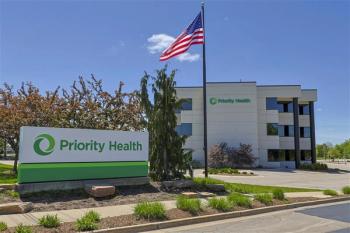
Educational Interventions Are Needed to Address Knowledge Gaps for Management of NASH

Two posters presented at The Liver Meeting identified the primary care coordinators for patients with nonalcoholic steatohepatitis (NASH) and areas of unmet need among specialists to provide optimal management.
While hepatologists and other specialists make most nonalcoholic steatohepatitis (NASH) diagnoses and are the primary coordinators of care, there is a need for tailored educational interventions to address remaining gaps in knowledge, such as how to monitor for the risk of cardiovascular disease (CVD) and hepatocellular carcinoma (HCC), according to posters presented at The Liver Meeting, held by the American Association for the Study of Liver Diseases (AASLD).
The first poster reviewed the role of hepatologists (heps) and gastroenterologists (GIs) in diagnosis and management of NASH.1 The researchers utilized a cross-sectional online survey of US health care professionals and patients with NASH. A total of 226 health care professionals responded, including primary care providers (PCPs), GI/heps, and endocrinologists, but only the GI/heps (n = 75) and patients with NASH (n = 152) were included in this analysis.
Both a majority of GI/heps (68%) and patients (52%) both believed that GI/heps were the primary coordinators of NASH care. However, 30% of patients said they viewed their PCP as the coordinator of their NASH care. While PCPs and endocrinologists made NASH diagnoses, more than a third (37%) of patients said their initial NASH diagnosis was provided by a hep, and 26% said it was by a GI.
Eighty-five percent of GI/heps said they considered AASLD clinical practice guidelines when diagnosing patients with NASH, and 88% said they used FibroScan to confirm diagnosis.
GI/heps said they most commonly recommended exercise (86%), diet (70%), and supplements (58%) to manage NASH. The most common reasons patients discontinued recommended treatment and management were difficulty (67%) and lack of adherence (64%) to lifestyle changes, according to GI/heps. Patients said living longer (55%) and improving NASH (46%) were their biggest motivators for managing their disease.
“As the primary coordinators of NASH care, GI/heps have the opportunity to drive the development and implementation of clear care pathways that include algorithmic based care and guidance on NASH patient co-management,” the authors concluded.
In the second poster, the researchers identified clinical practice gaps and challenges experienced by specialists involved in NASH care using a mixed-methods study and qualitative semistructured interviews.2 The respondents were hepatologists and endocrinologists practicing in Germany, Italy, the United Kingdom, and the United States.
The physicians reported there was no specific CVD evaluation process for patients with NASH and the “mean confidence level in predicting patient CVD risk was suboptimal.” Hepatologists were more likely to report suboptimal skills, and US and UK physicians were more likely to report higher suboptimal skills than those in Germany and Italy.
The respondents raised concerns that their patients with NASH “did not take CVD risks seriously enough to make lifestyle changes.”
Overall, more than one-third (35%) said they find it impossible to monitor the effectiveness of exercise and diet. Respondents in the United Kingdom were most likely to agree/strongly agree (50%), followed by Germany (38%), the United States (33%), and Italy (20%).
Endocrinologists said they had suboptimal skills to quantify fibrosis (78%) compared with hepatologists (26%). Similarly, they said they had suboptimal skills to estimate HCC risk (74%) compared with hepatologists (26%). Both groups expressed a need for more reliable tests to predict HCC for patients with NASH.
There was also a gap in knowledge regarding follow-ups for patients with NASH. Two-thirds (66%) of endrocrinologists and 30% of hepatologists said they had suboptimal knowledge to determine how often to follow up with patients and they thought many patients and general practitioners were also unaware of the need to follow up and monitor NASH progression.
“There is a demonstrated need for tailored educational interventions addressing gaps in knowledge, skill, and confidence,” the authors concluded.
References
1. Rinella M, Cryer DR, Articolo A, Fisher T, Schneider J, Nadolsky K. The role of hepatologists and gastroenterologists in diagnosis and treatment of patients with NASH. Presented at: The Liver Meeting; November 12-15, 2021; Virtual. Poster 1749.
2. Kowdley KV, Murray S, Lazure P, et al. Monitoring and management of NASH is an unmet need among hepatologists and endocrinologists: an international mixed-methods study in Europe and the USA. Presented at: The Liver Meeting; November 12-15, 2021; Virtual. Poster 649.
Newsletter
Stay ahead of policy, cost, and value—subscribe to AJMC for expert insights at the intersection of clinical care and health economics.






























































